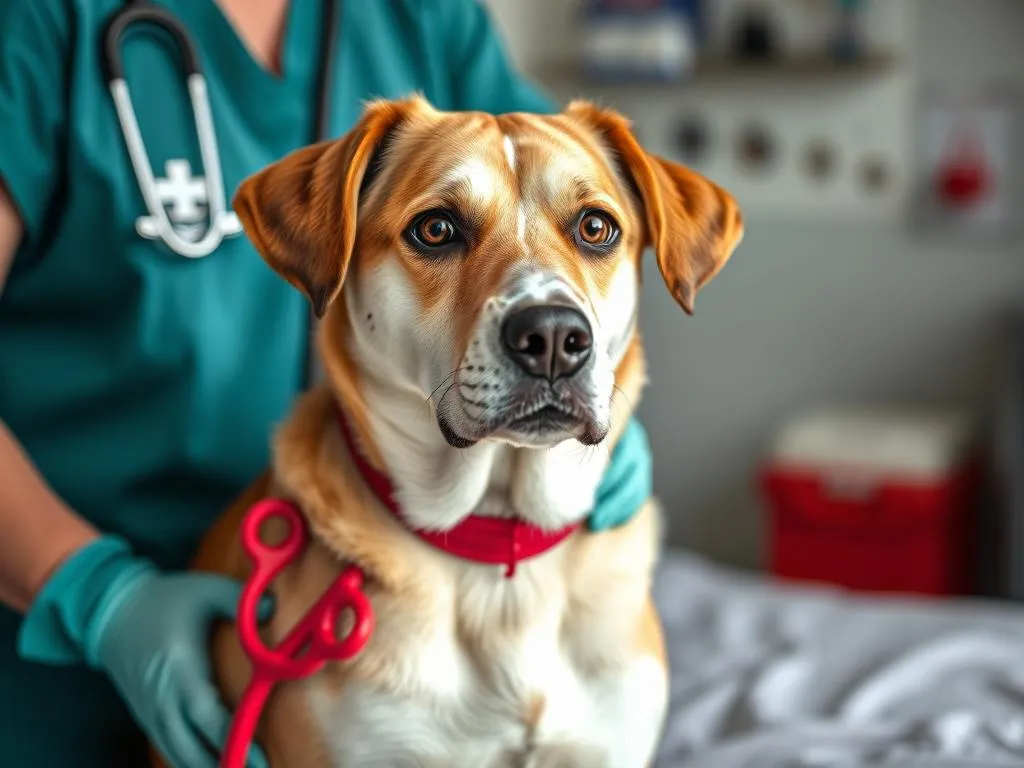
Introduction
Dog health care is a vital aspect of pet ownership that many dog owners need to take seriously. Just like humans, dogs can face unexpected health issues that require immediate attention. This is where emergency vet services come into play, providing crucial care when it’s needed most. Understanding the emergency vet cost for dogs is essential for every pet owner, as these costs can vary significantly based on several factors. This article will guide you through the intricacies of dog health care, focusing specifically on emergency vet costs, so you can be prepared for any situation that may arise.
Understanding Dog Health Care
Importance of Regular Health Care
Regular health care for dogs is not just about keeping them up-to-date on vaccinations. Routine check-ups play a critical role in identifying potential health issues before they escalate into emergencies. Preventive measures, such as maintaining a balanced diet, regular exercise, and routine dental care, can help minimize the risk of serious health problems and, consequently, the need for emergency services.
Common Health Issues in Dogs
Dogs are prone to various health issues that can lead to emergencies. Some common problems include:
- Allergies: These can manifest as skin irritations, itching, or digestive issues.
- Obesity: Can lead to severe health complications, including diabetes and heart disease.
- Infections: Ear infections, urinary tract infections, and skin infections can escalate quickly.
Being aware of signs that may indicate an emergency is important. For instance, if your dog is vomiting repeatedly, has difficulty breathing, or exhibits unusual lethargy, these could be warning signs that immediate veterinary attention is necessary.
What Constitutes a Veterinary Emergency?
Definition of Veterinary Emergencies
A veterinary emergency is defined as any situation that poses a serious risk to a dog’s health or life and requires immediate medical attention. This can encompass a wide range of conditions, from severe injuries to sudden illnesses.
Common Emergency Situations
Some common situations that may require urgent veterinary care include:
- Accidents: Such as being hit by a car or falling from a height.
- Poisoning: Ingestion of toxic substances like chocolate, plants, or household chemicals.
- Severe Allergic Reactions: Swelling, difficulty breathing, or collapse.
- Bloat: A life-threatening condition where the stomach twists.
How to Recognize an Emergency
Recognizing an emergency can sometimes be challenging. Here are some symptoms and signs that require immediate care:
- Excessive vomiting or diarrhea
- Severe pain or distress
- Difficulty breathing
- Unconsciousness or seizures
- Bleeding that won’t stop
Being aware of these symptoms can help you act quickly and seek the necessary care for your dog.
Emergency Vet Services
Types of Emergency Services Available
Emergency veterinary clinics offer a range of services to address urgent health issues, which typically include:
- Surgeries: For severe injuries or conditions like bloat.
- Diagnostic Tests: X-rays, blood tests, and ultrasounds to determine the underlying issue.
- Critical Care: Monitoring and treatment for life-threatening conditions.
24/7 Emergency Vet Clinics vs. Regular Vet Clinics
Understanding the difference between 24/7 emergency vet clinics and regular veterinary practices is essential. Regular vet clinics typically operate during business hours and may not be equipped to handle emergencies outside of those hours. In contrast, emergency clinics are designed to provide immediate care at any time, ensuring your dog receives prompt treatment when it matters most.
Advantages of using emergency services include:
- Immediate attention for critical situations.
- Access to specialized equipment and staff trained for emergencies.
- Availability of care during holidays and weekends.
Emergency Vet Costs for Dogs
Average Costs of Emergency Vet Services
The emergency vet cost for dogs can vary widely depending on the nature of the emergency. On average, you might expect to pay:
- Initial consultation fee: $50 – $150
- X-rays or diagnostics: $150 – $300
- Surgery: $800 – $3,000 (depending on complexity)
- Hospitalization: $500 – $1,500 per day
These costs can add up quickly, which is why being informed about potential expenses is essential for dog owners.
Factors Influencing Emergency Vet Costs
Several factors can influence the emergency vet cost for dogs, including:
- Location: Veterinary services in urban areas may be more expensive than in rural areas.
- Type of Emergency: More complex cases, such as surgeries, will incur higher costs than less severe issues.
- Clinic Reputation: Well-established clinics with a good reputation may charge a premium for their services.
- Additional Costs: Diagnostic tests, medications, and overnight stays can also increase overall costs.
Payment Options and Plans
Many veterinary clinics offer various payment options, including cash, credit cards, and financing plans. Additionally, pet insurance can play a significant role in covering emergency costs. Having a policy can alleviate some of the financial burdens associated with unexpected veterinary care.
When considering pet insurance, look for plans that cover emergency services and check the details regarding deductibles, copayments, and coverage limits.
Preparing for Emergency Vet Visits
Creating an Emergency Fund
Establishing an emergency fund specifically for pet health care is a practical step every dog owner should take. Setting aside a certain amount each month can help you manage unexpected vet expenses without straining your finances. Aim for a fund that can cover at least one emergency visit, which may range from $500 to $1,500 or more.
Preparing an Emergency Kit
An emergency kit for your dog can be a lifesaver in urgent situations. Essential items to include are:
- First Aid Supplies: Bandages, antiseptic wipes, gauze, and scissors.
- Medications: Keep a list of any ongoing medications your dog takes.
- Contact Information: Emergency vet clinics, poison control, and your regular vet.
- Basic Necessities: Food, water, and a leash.
Having these items readily available can make a stressful situation more manageable.
Finding an Emergency Vet in Advance
It’s wise to identify and research local emergency vet clinics before an emergency arises. Look for clinics that are:
- Open 24/7
- Located within a reasonable distance from your home
- Well-reviewed by other pet owners
Keep contact information easily accessible, either saved on your phone or written down in a visible location at home.
When to Seek Emergency Care
Assessing the Situation
Determining when to seek emergency care can be challenging. Consider the following guidelines:
- Severity of Symptoms: If your dog is in severe pain, difficulty breathing, or shows signs of shock, it’s time to seek immediate help.
- Duration of Symptoms: If your dog has been unwell for more than a few hours and is not improving, don’t hesitate to visit the vet.
- Your Instincts: If you feel something is wrong, trust your instincts and seek professional advice.
Common Myths About Emergency Vet Visits
There are several misconceptions about emergency vet visits that can delay treatment, including:
- “I can wait until the morning.” Many emergencies require immediate care, and waiting can worsen the situation.
- “It’s too expensive.” While costs can be high, prioritizing your pet’s health is crucial, and many clinics offer payment plans.
- “I can treat it at home.” Some conditions require professional evaluation and treatment; attempting to manage them at home could lead to complications.
Aftercare and Recovery
Post-Emergency Care
After an emergency visit, follow-up appointments may be necessary to monitor your dog’s recovery. These visits are crucial for assessing healing, adjusting medications, and ensuring your dog is on the road to recovery.
Signs of Complications
Be vigilant for any signs of complications after an emergency treatment. Symptoms to monitor include:
- Increased pain or discomfort
- Worsening lethargy
- Changes in appetite or drinking habits
- Unusual swelling or discharge
If you notice any of these signs, contact your vet immediately.
Conclusion
Understanding emergency vet costs for dogs is a vital aspect of responsible pet ownership. By being proactive in your dog’s health care, preparing for emergencies, and knowing when to seek help, you can ensure your furry friend receives the care they need without undue stress. Remember, timely veterinary care can make all the difference in your dog’s health and well-being.









